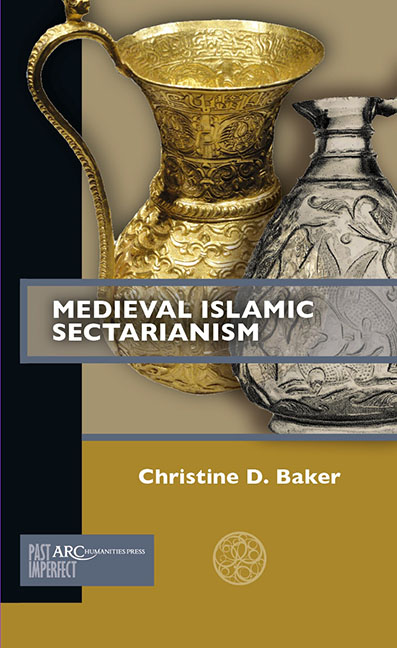Book contents
- Frontmatter
- Contents
- Acknowledgements and a Note on Transliteration
- Timeline
- Introduction
- Chapter 1 When did Sunnism Become Orthodox?
- Chapter 2 Non-Sunni Islams Before the Tenth Century
- Chapter 3 The Fatimids and Isma‘ili Shi‘ism in North Africa
- Chapter 4 The Buyids and Shiʿism in Baghdad
- Conclusion. Reactions to the Shiʿi Century
- Glossary of Key Terms
- Further Reading
Chapter 3 - The Fatimids and Isma‘ili Shi‘ism in North Africa
Published online by Cambridge University Press: 20 November 2020
- Frontmatter
- Contents
- Acknowledgements and a Note on Transliteration
- Timeline
- Introduction
- Chapter 1 When did Sunnism Become Orthodox?
- Chapter 2 Non-Sunni Islams Before the Tenth Century
- Chapter 3 The Fatimids and Isma‘ili Shi‘ism in North Africa
- Chapter 4 The Buyids and Shiʿism in Baghdad
- Conclusion. Reactions to the Shiʿi Century
- Glossary of Key Terms
- Further Reading
Summary
The Fatimid caliphate arose out of an underground missionary movement which preached a proto-Ismaʿili message. This movement culminated in the military conquest of North Africa in the tenth century. While details about the origins of the early Fatimid movement remain obscure, there was clear competition between different strands of proto-Ismaʿilism. Scholars trace the portion of movement that founded the Fatimid caliphate to ʿAbd Allah al-Mahdi (d. 934). Before the advent of the caliphate, the Fatimid Ismaʿilis spent ten years engaged in armed rebellion against the ʿAbbasid caliphate in parts of Iran, Iraq, Syria, Bahrain, Yemen, and North Africa. During this time, al-Mahdi made his way from Syria to North Africa. In 909, when al-Mahdi's forces conquered Qayrawan, the seat of the Aghlabid dynasty (r. 800–909), which ruled in the name of the ʿAbbasids, al-Mahdi declared himself to be the first Fatimid caliph.
The Fatimids in North Africa sought to expand their rule with the eventual goal of overthrowing the ʿAbbasid caliphate in Baghdad. During the caliphate of al-Mahdi and his son and successor al-Qaʾim (d. 946), they attempted to conquer Egypt several times without success. During al-Qaʾim's reign, the Fatimids also faced a prolonged rebellion by local Ibadi Khariji Berbers, which lasted from 943 to 947. The third Fatimid caliph, al-Mansur (d. 953), defeated this rebellion. His son and successor, al-Muʿizz (d. 975), successfully conquered Egypt and founded the new Fatimid imperial capital of Cairo to commemorate their success.
The Fatimids claimed descent from ʿAli and Fatima. But, despite taking Fatima as their namesake, they did not make their descent from ʿAli a central argument in their claim to authority. While later heresiographies accused the Fatimids of cursing the first three caliphs (Abu Bakr, ʿUmar, and ʿUthman, remembered by Sunnis as the Rashidun) for usurping ʿAli's power, none of the tenth-century sources reported that any of the first four Fatimid caliphs publicly cursed the Rashidun.
What might constitute Shiʿi claims to authority would have still been in flux in the tenth century. After all, this period is the era when Shiʿi identity was beginning to crystalize into distinct forms. But we would expect those claims to focus on the Imamate, descent from ʿAli and Fatima, and attacks on the Rashidun caliphs. Strikingly, these elements are not emphasized in Fatimid claims to authority.
- Type
- Chapter
- Information
- Medieval Islamic Sectarianism , pp. 37 - 58Publisher: Amsterdam University PressPrint publication year: 2019



